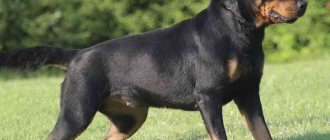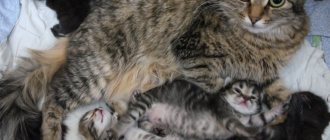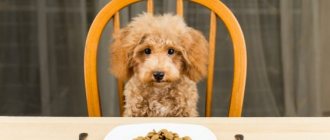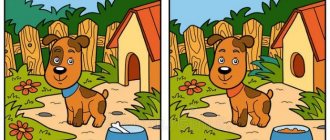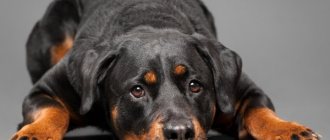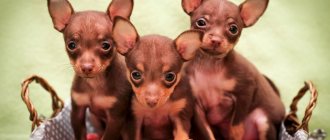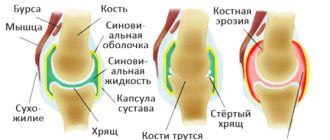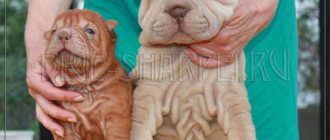/ Dogs / Dog breeds / Characteristics of the dog breed Miniature Poodle
0
3289
Article rating
The poodle is rightfully considered one of the most intelligent representatives of the extensive canine family. For many decades, representatives of the breed have been shining in the circus arena, amusing and surprising the audience. The toy poodle is no exception. This small, cute, smart and funny dog wins the hearts of animal lovers.
Miniature Poodle
Description of the breed
The Miniature Poodle embodies the dream of dog lovers about an intelligent, beautiful and playful family dog. Thanks to the well-known lion haircut, which gives the poodle a glamorous appearance, it is considered the dog of the beau monde world. Many people don’t even realize that the breed was originally created for hunting. Nature has endowed the poodle not only with external attractiveness and a good-natured character, but also with courage and the ability to stand up for itself.
Appearance
The miniature poodle, despite its small size, has a harmonious physique. The average height of an adult dog is 30 cm and weight is 5 kg, the girl weighs a little less. The dog's head is proportional to the body, oval in shape and tapers towards the nose. The animal's forehead is not wide and smoothly transitions into the muzzle, which has a regular, well-defined shape.
The nose with open nostrils is clearly visible. Its color, as the breed description says, matches the color of the animal and can be brown or black. The Toy Poodle's eyes are almond-shaped and set at an angle. They come in dark brown or black. The animal's ears are long and rounded at the ends.
The head and body of the animal are connected by a strong, short neck. The dog's chest is medium-sized, slightly convex at the top, and the belly is tucked in. The tail is set high and can be docked. The legs are straight and muscular, and the paws are dense and rounded.
Wool
The coat for dogs of the Miniature Poodle breed is their pride and main distinguishing feature. The breed standard defines 2 types of coat for dogs: curly and corded. Curly hair curls into beautiful flowing curls. The curls have almost the same length and, as they grow, they turn from curls into waves.
Corded wool consists of 20-centimeter hairs that are formed into cords. The toy poodle's coat is thick, soft, and resembles human hair. It consists of long guard hair and soft undercoat. The animal's fur is odorless and sheds little.
History of the origin of the breed
Even in ancient times, there were animals that looked like a poodle. The breed received its name in France in the 15-16th century and the dogs were mainly found among hunters, travel enthusiasts and sailors. Small-sized dogs were bred in the country and were companions of traveling artists and musicians, performed in circuses and were popular as truffle-hunting animals.
The homeland of the poodle dog breed is a country such as France. At the very beginning, dogs were used for hunting, but gradually the French king Henry 4 began to use them for his own protection. A variety such as the Royal Poodle appeared as a result of the increase in the breed of royal individuals.
For some time, only representatives of the French aristocracy had the right to have a poodle at home, and if the law was violated, a person was overtaken by death.
Some time after Europe entered the path of democracy, hunters were able to have faithful assistants in the form of dogs of this breed. This breed of dog was primarily used for catching waterfowl. The poodle's body is covered with hair in the form of rings that fit tightly together, which helped the dogs avoid severe hypothermia in the water and injuries.
However, the animals' fur is too long and, when wet, interferes with movement. For this reason, over time, hunters began to give their pets haircuts.
On the territory of Red Moscow, this breed of dog appeared in the 19th century after the conquest of Europe took place. During the Great Patriotic War, poodles helped carry the wounded from the battlefields, looked for mines and had close contact with scouts.
Color
According to the breed standard, the coat of a Miniature Poodle should have an even color without transitions from one color to another. There are six official poodle color types. These are black, white, apricot, red, brown and silver. Let's look at them in more detail.
White
The white color of Miniature Poodles is the most popular. Interestingly, white Miniature Poodle puppies are often born with cream or orange inclusions on the chest, legs, and ears. With age, the spots disappear and they become snow-white. The eyes of the “whites” are brown, and the nose, claws and eye rims are black.
Black
Black coat color for the Miniature Poodle is a classic. The ideal color for an animal of this species is deep black without any inclusions or shades. The Black Miniature Poodle's nose, claws and eye rims are black and the eyes are brown. It is believed that representatives of this type have the highest class wool among the representatives of the breed.
Silver
The silver color of the Miniature Poodle is established within 2 years. Puppies of this type are born black and gradually, starting from the head and paws, become lighter. Starting from the second month of the animal's life, a silver-gray color should be visible. These dogs are characterized by dark brown eyes, black nose, eye rims and charcoal colored claws.
Brown
The Brown Miniature Poodle is also called the Chocolate Poodle. The reason for this is the dark brown color of the animal’s fur without shades of black, cream or light brown. The Poodle's nose is dark brown, and its nails and eye rims are brown or black. The eyes of a representative of the “sweet” color are dark brown or amber in color.
Apricot
The Apricot Poodle is characterized by fur of all shades of apricot color. The tone of the animal’s fur is even, without inclusions, and the ears are somewhat darker than the rest of the “fur coat.” Puppies are born dark apricot and lighten with age. It happens that the color of their coat becomes cream. The nose, claws and eye rims of dogs are brown or black, and the eyes are brown.
Red
The look suggests a mahogany or dark apricot colored coat. With age, the fur coat may become lighter in color. Dogs have brown eyes and a black or brown nose. The claws are dark brown or black, and the eye rims are brown.
Character and intelligence
From birth, poodles have a friendly attitude towards people, they are ready to play with their owner for a long time, train and follow his commands. At the same time, we must not forget about the need for proper dog education and maintenance. Without such requirements, the dog can become a deviant animal that does not adhere to generally accepted norms of behavior.
Each type of poodle has a strictly individual character. You can meet those who demonstrate their pride and dignity to others, and most often this concerns the royal poodle. However, it is not uncommon for dogs to be simply joyful and friendly. Many owners claim that poodles have good intuition and are able to predict their desires. As soon as pet owners try to give any command, they immediately carry it out.
Poodles are considered sanguine dogs, so they are quite easy to train and have an ideal memory.
In addition, this breed of dog has a tendency to perform various tricks and they do it with great pleasure.
Attitude towards children and others
The poodle is a fairly sociable and positive dog, for which it is important not only to be near the owner, but also to imitate him. The dog tries to exchange emotions in every possible way, takes part in games and treats children well. In addition, they always get along well with other animals, so aggression is not typical for them.
Despite all the character traits listed, such dogs try not only to act as companions. If the owner is in danger, they are able to come to his defense and act as a bodyguard. Poodles are considered not picky animals, so they can be kept indoors without problems, but at the same time they must be given the opportunity to splash out their energy.
Other colors
The color of an animal's coat is established over several years and depends on nutrition, intensity of the sun's rays and care. Thanks to the incessant work of breeders conducting intra-breed matings, many non-standard colors of poodles have been bred. Some of them are officially recognized, some remain unrecognized. Let's look at these colors.
Harlequin
The harlequin color is a combination of white and black. About 60% of the coat is white. The head and ears of the animal are black. There are also several black areas on the back. The dog's eyes are dark brown, and his nose, lips, claws and eye rims are black.
Black and tan
The main color of this color occupies 80% of the animal’s entire coat. It can be not only black, but also brown, red or silver. Tan marks are located on the eyebrows, paws, muzzle, chest and along the edges of the ears. Black Poodles have tan colors that range from red, brown, gray, cream, and orange. Brown and red dogs have apricot, while silver dogs have cream and gray.
Brindle and sable
A miniature poodle's brindle coat suggests stripes on either a dark or light coat. The pattern is visible even if the animal is cut short. Representatives of the sable breed are characterized by a light brown coat, the tips of which are shaded dark brown or black. The black tips of the fur are especially noticeable on a poodle's ears.
Silver beige and coffee with milk
It happens that puppies born brown over time lighten and become silver with a beige tint. These dogs are characterized by dark amber colored eyes and a black nose. The color of coffee with milk is close in color to silver-beige, and differs only in shade. The coat of this color is a mixture of apricot, cream and chocolate colors.
Two tone, merle and splash
Two-colored Miniature Poodles are characterized by a white coat with randomly colored areas. Any stain color is allowed. Splash color is wool of any color, half of which is occupied by unevenly scattered white spots. The merle, or merle, color is uncommon and is characterized by small spots that contrast with the main color of the animal's coat.
Content
- What is color and suit in dogs
- Poodle breed colors
- How to choose a healthy puppy
When a person chooses a pet, he gives preference not only to a certain breed, but also focuses his attention on the color (in this case, choosing a poodle puppy), it comes in different shades and colors, striking with its beautiful patterns and appearance. Genetics is one of the main points in a dog’s appearance; color, type of coat and proportions depend on it.
Character
When characterizing the Miniature Poodle, first of all it should be noted that it is a very smart and easy to train dog. Poodle puppies easily remember their names and quickly get used to the way of life of the family in which they live. According to owners' reviews, dogs are easy to teach funny tricks that they will happily demonstrate to guests at home. The only “but”: being extremely gentle and touchy animals, dogs cannot tolerate shouting or cruel treatment.
Friendliness is the main character of the toy poodle. This little dog will gladly keep company with the children with whom he lives in the house. He will become their friend and an active participant in the games, but only on the condition that he will not be offended. If there are other animals in the house, the poodle will certainly find a common language with them, but with the same condition of being treated well.
The hunting past of the breed makes itself felt to this day. Despite its small stature, the character of the Miniature Poodle contains guard inclinations. If uninvited guests have entered the house, the dog can scare them with its loud barking. When the Miniature Poodle sees that its owner is in danger, he fearlessly rushes at the enemy, protecting his friend.
Miniature Poodle
Intelligence and unobtrusiveness are another character trait of the pet. The dog feels the mood of the owner - he will never pester him at the wrong time. He has fun with the owner and is sad with him. We must not forget about communication with your pet: dogs do not tolerate loneliness well. They worry, feel sad and whine when they are left without company for a long time.
The character traits of the Miniature Poodle are such that it is perfect for both active people and a person who loves a quiet life. The dog will happily accompany its owner during a morning run or a long walk. With the same pleasure, the dog will sit with the owner of the house and listen to his stories. The versatility of the Miniature Poodle and its small size have made this breed extremely popular.
Varieties of the poodle breed with photos
The poodle breed is divided into 4 types, taking into account height at the withers. However, dog experts say that these indicators do not serve as the only criterion in determining the type of poodle. There is some difference in the size and weight of animals, as well as in their character and habits.
Large (standard)
A standard poodle is also called a royal poodle and the height of such a dog is 45-60 cm. A dog of this size requires appropriate living conditions and a play area. The Standard Poodle can be successfully trained and can become a hunting or service dog. The standard breed poodle treats others kindly and is therefore not capable of causing harm to its owner.
Average
The medium-sized poodle reaches a height of 35-45 cm, and their character has many similarities with the royal variety. The animals are quite obedient, balanced and hardy. From birth, the pet is endowed with a sense of self-esteem and adapts well to life in an apartment. Despite this, such a dog requires mandatory long walks with physical exercise.
Dwarf
The size at the withers of a dwarf poodle is 28-35 cm. Dogs of this size look quite cute and gentle, but they have a fairly hardy character. If they do not receive enough love, they can become jealous of the owner and at the same time always require increased attention.
A poodle of this breed is considered to be a fairly energetic dog who loves to play with children and misbehave. In addition, the toy poodle is considered a fairly loyal dog.
Toy (smallest)
The toy poodle resembles a toy in appearance and its height reaches only 24-28 cm. However, this type of pet is considered quite proud, so you should not take it seriously. One of the disadvantages of a toy poodle is its miniature size, and it constantly barks. However, a pet may bite if they refuse to recognize it as a full-fledged dog.
Care and maintenance
Keeping and caring for a Miniature Poodle mainly involves caring for the animal’s coat. To do this, you will need special brushes and combs for combing. The dog should be combed at least once or twice a week, otherwise the dead hairs that remain in the coat will become tangled and cause discomfort to the dog.
Grooming a poodle will make it easier to care for its coat, so it is recommended to cut your dog’s hair once every 2 months. You can trim your pet at home yourself, or you can contact a professional groomer. It all depends on the type and complexity of the haircut. Each owner chooses the type of haircut at his own discretion. The most popular is the lion style, in which the dog’s mane, “boots” and a pompom on the tail are left. For those who do not want to cut their pet's hair this way, it is recommended to simply trim the overgrown hair evenly.
The Miniature Poodle is a dog that loves cleanliness, so it is recommended to bathe it once a week. The animal should be washed with special shampoos and conditioners suitable for this type of coat. You should take care of both your Miniature Poodle's ears and teeth: they should be cleaned and examined regularly. The dog needs special clothes that are worn for walks in cold weather.
Pros and cons of the breed
Among the advantages of this breed, one should highlight their good intelligence, friendliness and sociability. In addition, such dogs are always focused on their owner and are loyal to children. Pets are quite obedient, so an elderly person or a school-age child can raise them. A special feature of this breed is the fact that poodles do not shed, so they can be kept in families with allergies.
Among the disadvantages of this breed of dogs is their increased physical activity, which forces them to take them for walks every day. In addition, wool requires proper care, which requires a large investment. The Poodle can be crossed with breeds such as the Golden Retriever, Cocker Spaniel and English Pointer.
Feeding
The Miniature Poodle's diet should be balanced. In no case should you include fatty foods in your diet: a dog’s weak liver reacts instantly. The main part of the Miniature Poodle's diet consists of meat products. The dog should be fed frozen beef or lamb.
Offal is good for your dog, but it should be boiled before eating. Once or twice a week, the dog should be fed boiled sea fish. The menu includes fermented milk products: cottage cheese or kefir. Don't forget to give your pet semi-liquid cereals and wholemeal bread. To saturate the animal's body with vitamins and minerals, the dog must be fed vegetables.
The easiest way to achieve a balanced diet is ready-made industrial animal feed. High-quality professional food contains all the necessary components for proper nutrition of your pet. The product must be suitable for the age of the animal and its breed. Do not exceed the dosage set by the food manufacturer.
Health
The lifespan of a Miniature Poodle depends on the conditions in which it lives, proper feeding and the presence of chronic diseases. On average it is 16 years. There are a number of diseases characteristic of dogs of this breed:
- Ear diseases of an infectious nature.
- Deafness in one or both ears (due to ear diseases or congenital).
- Diabetes (caused by obesity, old age or genetic predisposition).
- Retinal atrophy (gradually leading to cataracts).
- Tendency to cardiovascular diseases.
- Hypothyroidism (cause: dysfunction of the thyroid gland). The first signs of the disease: excess weight, hunger, skin problems.
Buying a puppy
Before purchasing a Miniature Poodle, you need to weigh the pros and cons of such a decision. From the moment the puppy crosses the threshold of the house, the life of its inhabitants will change. You will have to include caring for your dog into your usual daily routine. It will take time to walk and raise the dog, to prepare a diet and go to the veterinarian.
To purchase a puppy, it is advisable to contact a specialized nursery, where they will issue documents for the dog, show its parents, and familiarize them with the rules of keeping. How much does a Miniature Poodle puppy cost? The price depends on the class of the dog and the reputation of the breeder. As for the average cost, it starts from $100 and can reach several thousand for elite show puppies.
Training and education
Due to their high natural intelligence, poodles quickly learn commands, and there are no difficulties with their upbringing and training. It is recommended to train the puppy in a playful way with classes lasting no more than 15 minutes. You can repeat lessons only several times a day. The dog's nervous system is highly sensitive, and it is unacceptable to apply harsh training and punishment to it. For each action performed, the pet should be rewarded with a treat.
First of all, your pet needs to be trained to follow the commands “come” and “fu”, as they are necessary during walks.
Some owners are of the opinion that a toy poodle dog does not need training. This belief is erroneous, since during a walk a pet can pick up and eat something harmful, and if it gets carried away with its own business, it may not immediately return to its owner and get lost. Also, lack of education leads to problems when traveling and when visiting the veterinarian.
